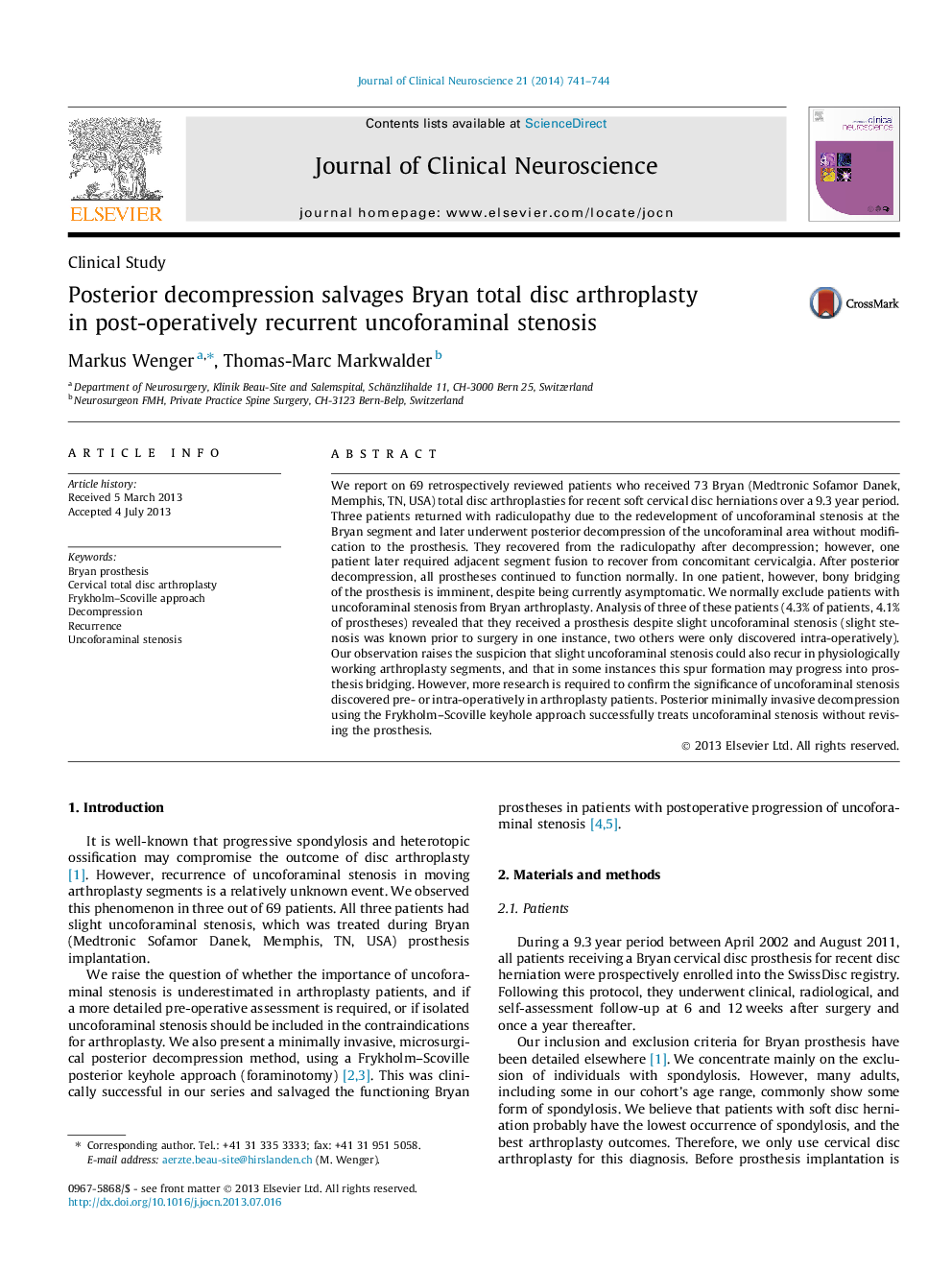| Article ID | Journal | Published Year | Pages | File Type |
|---|---|---|---|---|
| 6019644 | Journal of Clinical Neuroscience | 2014 | 4 Pages |
Abstract
We report on 69 retrospectively reviewed patients who received 73 Bryan (Medtronic Sofamor Danek, Memphis, TN, USA) total disc arthroplasties for recent soft cervical disc herniations over a 9.3Â year period. Three patients returned with radiculopathy due to the redevelopment of uncoforaminal stenosis at the Bryan segment and later underwent posterior decompression of the uncoforaminal area without modification to the prosthesis. They recovered from the radiculopathy after decompression; however, one patient later required adjacent segment fusion to recover from concomitant cervicalgia. After posterior decompression, all prostheses continued to function normally. In one patient, however, bony bridging of the prosthesis is imminent, despite being currently asymptomatic. We normally exclude patients with uncoforaminal stenosis from Bryan arthroplasty. Analysis of three of these patients (4.3% of patients, 4.1% of prostheses) revealed that they received a prosthesis despite slight uncoforaminal stenosis (slight stenosis was known prior to surgery in one instance, two others were only discovered intra-operatively). Our observation raises the suspicion that slight uncoforaminal stenosis could also recur in physiologically working arthroplasty segments, and that in some instances this spur formation may progress into prosthesis bridging. However, more research is required to confirm the significance of uncoforaminal stenosis discovered pre- or intra-operatively in arthroplasty patients. Posterior minimally invasive decompression using the Frykholm-Scoville keyhole approach successfully treats uncoforaminal stenosis without revising the prosthesis.
Keywords
Related Topics
Life Sciences
Neuroscience
Neurology
Authors
Markus Wenger, Thomas-Marc Markwalder,
